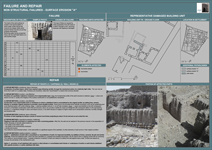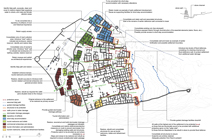Quattrone, G., 2013. Beyond disciplinary boundaries: "expert-reviewed" research for the Omani government.
F. Ottone & M. Rossi, eds. Theories and Experimental Design for Research in Architectural Technology. Firenze: Firenze University Press
Click here for further information on this publication
Abstract
Taking as an example the REF impact case study "Managing heritage, designing futures: heritage documentation, management and master-planning in the Arab Gulf countries", built on expert-reviewed research undertaken in Oman for the Ministry of Heritage and Culture of the Sultanate, the chapter proposes a reflection on the need for overcoming conventional disciplinary boundaries in the documentation and study of the vernacular environments of Oman, and explains how and why architectural technology can play a key role in putting forward a new vision for the sustainable and appropriate management and development of Omani abandoned settlements.
Working with what is found through an approach of technological regionalism, to carry on a narration that has been interrupted, architectural technology contributes towards pushing heritage management in Oman and the Middle East beyond orthodox conservation, towards the recycling of discarded fabrics - re-ordering, re-arranging, re-signifying through juxtapositions, encapsulations, additions, superimpositions and incorporations of new matter and meanings.

Example of non-structural failures sheet
of mud brick envelopes in Harat al-Yemen (Oman) and related repair methods.
Image: ArCHIAM, 2012

Master Plan for Harat as-Sulayf (Ibri, Oman) for the selective rehabilitation of dwellings and open spaces and the consolidation and restoration of mud brick structures.
Image: ArCHIAM, 2012